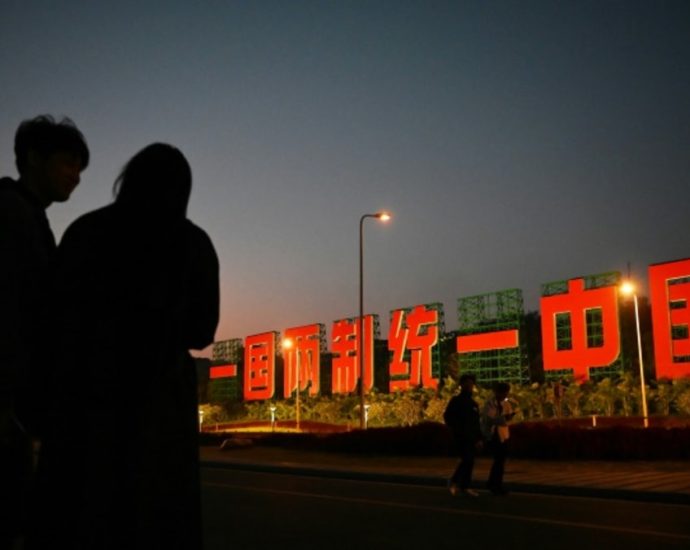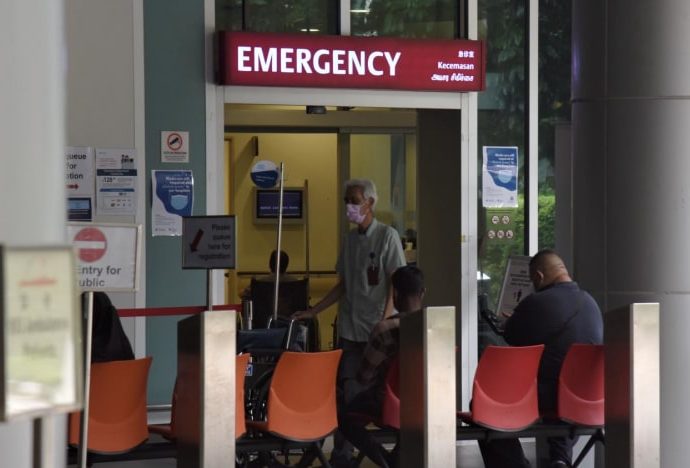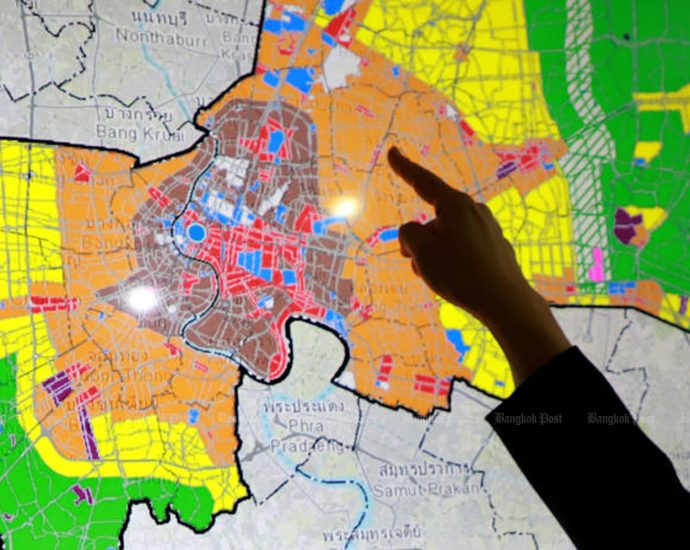Commentary: Why it makes sense for Singapore to help protect the Red Sea

Moreover, most recently a grave new threat has emerged – that of a semi-submersible sea-based drone. These are particularly dangerous as they are very hard to see and destroy, and designed to hit its target at the waterline, its most vulnerable point.
Should such a drone strike a large container ship or oil or gas tanker, the damage could be catastrophic with ships sunk, crews killed and appalling environmental consequences.
ESCALATION IS A POOR ALTERNATIVE
Warship numbers and the schedules of individual shipping companies will not allow regular convoying for protection. So, Operation Prosperity Guardian will most likely be conducted by means of carefully chosen and patrolled shipping routes, with concentrations of naval forces in areas where the threat is considered to be at its highest.
Although this is a complex, demanding and expensive task, escalating the response may be a dangerous alternative.
With US and UK having launched first strikes against targets linked to the Houthis, any retaliatory action could endanger the precarious ceasefire in the Yemeni civil war and runs the risk of widening still further the conflict already engulfing part of the region.
So both by defending the trading system on which the whole world depends and trying to limit the dangers of an even greater war in the area, Operation Prosperity Guardian is an important exercise in the defence of global peace and prosperity.
Small states like Singapore can do their part too. As a small island state that depends on the global maritime system for its security and survival, Singapore must do what it can to support and uphold the multilateral rules-based system.
Geoffrey Till is Professor and Adviser to the Maritime Security Programme and Jane Chan is Senior Fellow and Coordinator of the Maritime Security Programme, at the S Rajaratnam School of International Studies (RSIS), Nanyang Technological University (NTU), Singapore.
Rising seas and warming weather threaten vulnerable native flora and fauna in Singapore

“It’s difficult for freshwater crabs to swim across the sea to Malaysia or Indonesia, so they are stuck here,” said NSS President Dr Yeo Seng Beng.
As the species does not exist anywhere else, it is also critically endangered globally and hence could easily go extinct.
“History won’t be kind to Singapore if we allow endemic species which only exist here to disappear,” he added.
Losing these habitats also puts other wildlife at risk of losing shorelines to breed, nest and feed, including the endangered hawksbill turtles that come in on the tides.
Migratory birds flying in for the summer, which make up about half of all birds found in Singapore, will also be affected.
They include the Eurasian Whimbrel, the Common Redshank and the Pacific Golden Plover, which are common visitors to the nation’s mudflats and coastal areas.
Taiwan Votes 2024: Beijing watches presidential race, dangling carrots for integration plans

Despite the criticisms, Mr Chen said he still found his experience studying in China invaluable.
He said that Taiwanese youths need more exposure in order to truly understand China, before passing judgement themselves.
The cross-strait integration plan unveiled by the Chinese State Council is part of China’s longstanding strategy to foster closer ties with Taiwan.
“We will suppress pro-Taiwan independence forces while using a soft approach towards the Taiwanese people,” Professor Li Fei from Xiamen University’s Taiwan Research Center told CNA.
“It is a carrot-and-stick approach. The carrot is to promote cross-strait integration and preferential policies for the Taiwanese.”
He added that despite many Taiwanese opposing reunification after seeing how Hong Kong is governed under the “One Country, Two Systems” principle, there is room for negotiation.
“The conditions for Taiwan’s ‘One Country, Two Systems’ may be discussed. ‘One Country’ is non-negotiable, but ‘Two Systems’ is negotiable. We are constantly adjusting and adapting it,” said Prof Li.
“We have to adapt it according to how we reunify with Taiwan. If it is a peaceful reunification, of course we can discuss the conditions. If it is a non-peaceful reunification, the system may be different.”
BETWEEN WAR AND PEACE
Beijing has framed the upcoming Taiwanese presidential contest as a choice between war and peace.
Bengaluru Kannada protests: Why English is a touchy topic in India’s Silicon Valley
 PTI
PTIIn the run-up to the New Year, the southern city of Bengaluru (formerly Bangalore) – often called India’s Silicon Valley for being home to global information-technology (IT) majors – hit the headlines after protesters tore down English billboards, demanding that they be written in the city’s local language, Kannada.
The Karnataka Rakshana Vedike’s (KRV) protest was to coerce the government to implement a law which mandates that 60% of each display sign in the city should have Kannada.
KRV got some support from India’s main political parties which condemned the violence but said there was no harm in demanding Kannada signages. A federal minister of the governing Bharatiya Janata Party (BJP) told a local news channel, “What is the harm in writing in Kannada, apart from English? This is not England”.
None of this came as a surprise because in India – home to more than 300 languages – assertion of linguistic identities is common. For instance, pro-Tamil language protesters in Karnataka’s neighbouring state Tamil Nadu have used the slogan “Tamil Nadu is for Tamils” since the 1930s.
After India won its independence in 1947, several states in the country were formed along linguistic lines by grouping together regions which spoke the same language. Karnataka was one such state formed in 1956.
KRV, which tore down the English billboards last month, has been claiming for decades that Kannada and its speakers have been relegated to the margins in the cosmopolitan city where people from across the country, and the world, work and live. In Bengaluru, four out of 10 people come from outside the city, reports say, although two-thirds of this population come from within the state.
While the influx of migrants has made some local people think that they would soon become a minority in the city, KRV’s “Kannada first” demand springs from a linguistic nationalism that has been in the making for decades. Cultural historian Janaki Nair says in a research paper that Kannada speakers first demanded a separate state in the 1920s.
Ms Nair notes that, at first, Kannada nationalists were accommodative of other languages, including English. One of the Kannada nationalists even said that “English is our cultural and political language, Sanskrit our spiritual and classical language and Kannada our native and speaking language”, she writes.

“In the beginning, this linguistic agitation was never muscular as it mainly asked for the development of the language and literature. Of late, vigorous protests have taken over the movement,” Kannada scholar Muzaffar Assadi told the BBC.
The strident protests started in the 1980s and before protesting against English, Kannada nationalists took on other Indian languages – Sanskrit, Tamil, Urdu and Hindi – scholars say.
The first of the vigorous protests was the Gokak agitation of 1982 which demanded that Kannada be made the sole first language in schools instead of Sanskrit. The Kannada film industry supported this protest, with superstar Rajkumar spearheading the movement.
This was followed by anti-Tamil riots of 1991 which gripped Bengaluru and Mysuru cities. The dispute was over sharing of water in the Cauvery river which courses through both the states. Neither Tamil speakers nor Kannada speakers wanted the other to have the larger water share.
Later, in 1996, major protests broke out when state broadcaster Doordarshan started programming in Urdu language. A decade later, in 2017, Kannada nationalists led by KRV, took on Hindi. The protesters demanded removal of Hindi from signages and public announcements on Bengaluru Metro line. “Namma Metro, Hindi Beda,” meaning ‘no Hindi in our Metro’ trended for days on social media.
Kannada nationalists started protesting against English only after India’s IT boom started in the 1990s and the demand for for English-speaking workers rose.
There was a general anxiety among many Kannadigas that English speakers from other states were taking away their jobs, and KRV started demanding the implementation of quotas or affirmative action for “sons of the soil”, as recommended by the Sarojini Mahishi committee of the 1980s.
KRV officials say they support regional languages over others as India’s federalism is rooted in regional autonomy and English signages get in the way of that. They add that they are not against multinational companies where English is crucial for work.
“We only think Kannada and its people should come first,” says Arun Javgal, organisational secretary of KRV, who works in the IT field himself.
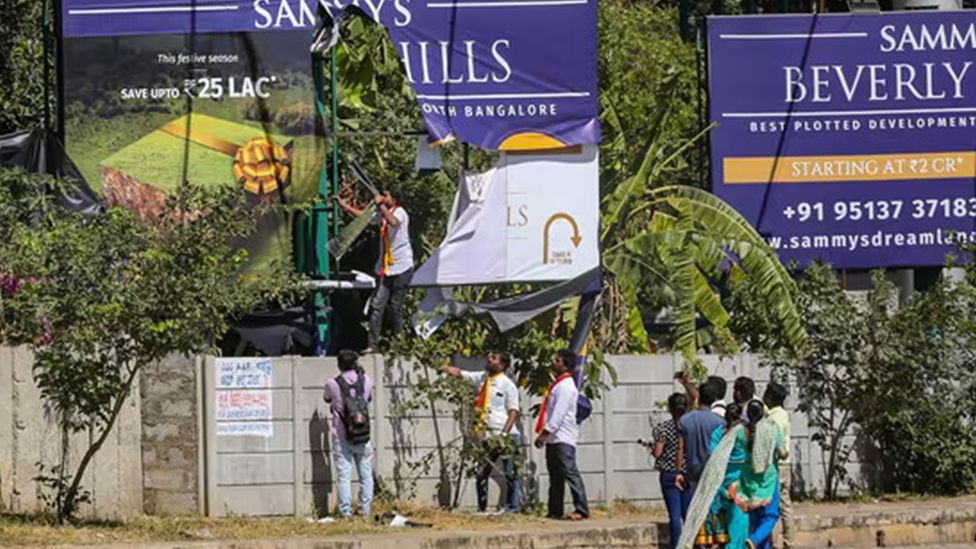
Most manifestations of Kannada nationalism, however, go unopposed in the state with a section of Kannada speakers fervently supporting KRV’s demands. Mr Javgal claims his organisation has a lot of support in the state, including in Bengaluru.
But can the recent protests and change in signages from English to Kannada affect brand Bengaluru’s global image? It will not, says Federation of Karnataka Chamber of Commerce and Industry (FKCCI), which represents commercial establishments in the state.
“It’s the diligent workforce of Bengaluru which built the brand and they would continue to do good work even if the signages change,” FKCCI president Ramesh Chandra says, adding that they have requested “commercial establishments to follow the law and use Kannada prominently in signages”.
The deadline for changing the signages is 28 February. As for KRV, its leaders say if European countries can have billboards in their local languages, so can Karnataka which has a population of 61.1 million, of which a majority are Kannada speakers.
BBC News India is now on YouTube. Click here to subscribe and watch our documentaries, explainers and features.

Read more India stories from the BBC:

-
-
3 September 2013
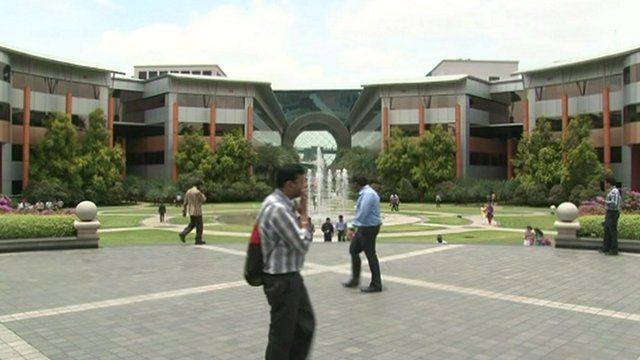
-
Heart of the Matter Podcast: If more hospital beds isn’t the solution, what is?

Patients have reported waiting for days to get a bed at a public hospital. Health experts say the biggest reason is that there are issues transiting to proper care after discharge.
Otelli Edwards speaks to public health specialist Dr Jeremy Lim, Duke-NUS Medical School’s Dr David Matchar and Jeremy Lee, assistant chief operating officer at the National University Hospital.
Whatâs a risk you took that youâre proud of? These women in Singapore share their inspiring stories

My youngest daughter Samirah was 16 when she was diagnosed with Crohn’s disease, a type of inflammatory bowel disease that can lead to abdominal pain, severe diarrhoea, fatigue and malnutrition. Due to this, she experienced severe stomach pain and was hospitalised often.
It was manageable when she was home, but difficult when she moved abroad. After her O Levels, Samirah enrolled in a pre-university institution in Kuala Lumpur (KL), Malaysia. When her condition flared up, I would take urgent leave, and my husband and I would drive up to KL to be by her side.
But when she went to Belfast, Northern Ireland, for her university degree, it got really tough. While the medical professionals there were more familiar with her condition and she received free medical treatment as a student, she struggled being alone.
Eventually, she fell into severe depression.
In March 2022, I had to make a decision: Stay in my teaching job or quit to take care of my daughter full-time in an unfamiliar country.
I had to consider my financial situation. Even though my other daughters, aged 28 and 27, were able to support themselves, it was tough to leave a stable income as my husband and I were both supporting our parents.
I also had to consider the responsibility I had as a teacher. I was teaching O-Level students then and to leave in April meant that I couldn’t guide them for the rest of the year.
But I knew being a mother was the biggest priority, so I took a risk and left the service.
After ensuring that matters would be cared for in our absence, my husband – who had decided to retire to be with Samirah – and I flew to Belfast to be with our daughter.
Since then, I’ve taken care of her, accompanying her to medical appointments, and supporting her.
Leaving my job and the rest of my family was a scary decision. I was aware that I’d lose my income – I didn’t know if we could survive on just our savings – and I wasn’t sure if Samirah would get better.
But I didn’t want to overthink it. I just knew that my daughter needed me and I had to be there for her.
Samirah graduated later that year and secured a research job in Newcastle, and we moved there with her. For her, I would risk it all over again.
KAVITHA KRISHNAN, ARTISTIC DIRECTOR, 52
The risk she took: She opened two dance companies that welcome people with disabilities.
Thereâs both more and less US inflation than meets the eye
The US Consumer Price Index rose by 3.4% in the year through December 2023, somewhat higher than the consensus forecast, mainly due to a big jump in the reported cost of shelter, which rose 6.2% year-on-year. The shelter number is bogus; rents on new apartments reported by Zillow and Apartmentlist.com have fallen during the past year, and during each of the past five months.

The Bureau of Labor Statistics, which calculates the Consumer Price Index, reports what it thinks is the average cost of renting a home. But the cost of a new lease as reported by Apartmentlist.com is falling. It takes about 12 months for the BLS estimate to catch up with the change in new rentals.

The official CPI shelter number will catch up to the observed cost of new rentals later in 2024, and the BLS will report a decline in the cost of housing, which makes up a third of the price index.

The price of goods also is falling after the COVID surge, when consumers scrambled to buy autos (to avoid public transport) and work-at-home electronics. An important factor is the falling cost of imports from China, due in part to the fall in China’s exchange rate vs. the US dollar.
The Federal Reserve and Fed-watchers in financial markets focus on something quite different: In the Fed’s flawed economic model, wage growth is the main driver of inflation. Labor shortages during the COVID shutdowns pushed the year-on-year change in average weekly earnings to 7%, and the year-on-year rate is still around 4%.

Since the Fed wants 2% inflation, the Fed-watchers reckon, it will keep interest rates high until demand for labor shrinks and wage increases fall back to the 2% annualized level. That’s why Treasury yields jumped after the Bureau of Labor Statistics last week reported larger-than-expected December employment growth.
It doesn’t really work that way. Most of the employment growth during the past year has been in low-wage fields like health care, education, and leisure and hospitality, which showed very little wage growth during 2023. Sectors that showed very high wage growth like manufacturing had no growth in employment at all.

The sector with the highest growth in employment (up 4.2% in 2023) was education and health services, which had wage growth of just 2.4%. The sector with the lowest employment growth (almost unchanged during 2023) was manufacturing, where wages rose by almost 6%.
As US manufacturing wages rose, largely due to a shortage of workers, Americans bought more goods from overseas. The US trade balance in goods jumped from a $720 billion annual deficit just before the Covid epidemic to a $1 trillion annual deficit during 2023.

The fact that there isn’t much inflation according to standard statistical reporting is small consolation to consumers, who can’t afford to buy cars or houses.
The monthly cost of running a car now stands around $1,000 – about $700 average car payment, $150 insurance, and $150 to $200 in gas. In 2018, it was only $600. A lot of the difference is due to the much higher cost of financing cars, along with the jump in the price of new vehicles.
The average cost of a mortgage on a new home, meanwhile, is $2,883, compared to a median cost of existing mortgages of just $1,775. That’s the result of the Fed’s interest-rate hikes. The Fed created a great deal of inflation that wasn’t there before by raising interest rates.
The inflation burst of 2020-2021 had little to do with interest rates. The culprit was $6 trillion in additional Covid subsidies by the Trump and Biden Administrations. Trump’s largesse was defensible given the shutdown of the economy. Biden doubled down on the Trump subsidies after the epidemic was largely over and the economy was recovering. Interest rates had very little to do with it.
For US consumers, the bottom line is that the selling price of homes, the cost of new leases and the price of most consumer durables will fall slightly – but nobody will be able to afford to buy anything, because the cost of financing will remain impossibly high for an extended period of time.
In terms of real cash outgo, there’s a lot more inflation than meets the eye, thanks to a misguided Federal Reserve.
Taiwan election: It’s not war young voters worry about – it’s jobs

Ziwei can still remember the months she spent huddling alone in a tiny shoebox apartment in Taipei.
There was no window in the 10-sq-m studio, just a small vent near the ceiling. It perpetually stank of sewage, even after she stuffed her shower drain with plastic bags. And the walls were painted in just the oddest shade of orange.
“With no windows, I felt so sad,” the 32-year-old recalled. “I would stay out really late every night, and I would come home only to sleep.”
But it was all she could afford in 2019 after breaking up with her boyfriend and moving out. Though she was a civil servant – considered to be a good job – her monthly pay was NT$40,000 ($1,285; £1,011) at the time, well below the national average.
Low wages and housing will be on the minds of Ziwei and six million Taiwanese voters under the age of 40 on Saturday, when they choose their president and parliament.
As it does at every election, the question of China’s claims on Taiwan and how the island should respond to Beijing’s threats looms large. But this time voters are more concerned about the economy.
A recent survey of 15,000 Taiwanese by Commonwealth Magazine saw most stating that economic development should be their next president’s top priority, over national security and cross-strait relations. It was especially crucial for respondents aged between 20 and 39.
After eight years in power, the Democratic Progressive Party (DPP) is coming under fire for failing to adequately improve people’s lives, especially younger Taiwanese.
Rising house prices and rentals, stagnating incomes, a significant youth unemployment rate, and an annual GDP growth hovering around 2% have worried many. More than a third of low-wage workers are aged below 30, according to an analysis provided to the BBC by labour expert Lee Chien-hung from the Chinese Culture University.
It’s given rise to social phenomenon such as the “beipiao”, youths from poorer parts of Taiwan seeking better jobs in the capital while grappling with rising rents. There’s also the “xiegang”, young workers juggling multiple jobs to earn a decent wage, and the “yueguangzu”, those who live paycheck to paycheck with no savings.
Kaili, a friend of Ziwei’s, is a “beipiao” from the southern city of Chiayi resigned to a lifetime of renting in Taipei.
When it comes to buying her own home “I’ve given up hope”, said the 37-year-old, who works in documentary films.
“I can’t see the reason why I should buy. My salary is quite low. I don’t think I can afford to put down a deposit on a home, not now, not even in years’ time.”
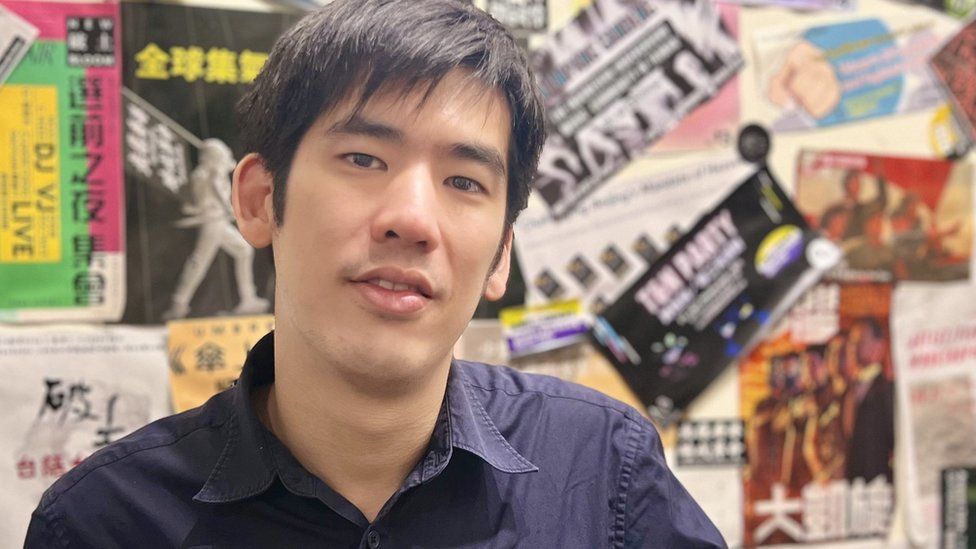
“There’s a saying these days – to afford a home in Taipei, you can’t eat or drink for 15 years,” said Brian Hioe, a young Taiwanese political commentator and editor of online magazine New Bloom.
“There’s this anger against the DPP for failing to address these longstanding economic issues that face Taiwan.”
He noted this sentiment is particularly visible among Gen Z voters who view the party as the establishment, and have little memory of the Kuomintang (KMT) government that came before the current DPP rule.
And while the DPP has won votes in the past campaigning on protecting Taiwan from China, this strategy has worn thin the patience of some young voters. They “feel that the cross-strait issue is something political parties just leverage on to win elections” at the expense of other issues, he added.
Opponents of the DPP are hoping to tap on their frustration.
The KMT, the other major political party in Taiwan, casts the DPP as corrupt and inept and has promised change. Once the incumbent that ruled the island with an iron grip, it has alternated power with the DPP every eight years since 2000.
But it is the upstart Taiwan People’s Party (TPP) led by Ko Wen-je that has gained traction among young voters, especially those disillusioned with the two main parties. The former surgeon has gained fans for his rational and straight-talking persona, though he has also been criticised for remarks perceived as sexist and homophobic.

On a chilly Wednesday night in the port city of Keelung, a crowd made up mostly of young families and couples gathered by the waterfront for a TPP rally. They cheered as speakers urged them to “smash the blue and green”, a reference to the KMT and DPP’s party colours, and waved placards with one of Mr Ko’s campaign slogans, “Keep Promise”.
Among them was Harrison Wu, a 25-year-old engineer. He voted for the DPP in the last election, which he now regrets.
“[President] Tsai Ing-wen has been too soft,” he said, before launching into a litany of complaints ranging from exorbitant housing prices and low wages to party corruption scandals.
“They had control of the legislature for eight years and didn’t get anything done. Now they are asking us to vote in a DPP majority again, but what’s the point?”
The DPP is aware that young people are losing faith in them. It has promised to build more affordable housing, raise the minimum wage, and invest in upskilling younger workers so they can get better jobs.

Read more about the Taiwan election:

It’s also appealing to millennials for their support. Its latest campaign ad is dedicated to the Sunflower Movement generation that organised anti-China protests a decade ago, paving the way for the DPP to kick the KMT out of government in 2016.
With a melancholic soundtrack, set to shots of people moving backwards and references to the KMT, the ad warns youths that Taiwan’s progress achieved under the DPP could be rolled back if they lose power.
“You feel a bit exhausted, you don’t want to speak out because it’s too troublesome,” a young man’s voiceover says soothingly. “But the very thing you didn’t want is now returning.”
“You once stood up for your beliefs, once saw the vote in your hands as the most important thing… Only you can make the choice so that Taiwan can be our Taiwan.”

Bursting bubble
For decades successive Taiwanese governments have discussed how to solve issues such as low wages “but no matter which party [is in power] it still hasn’t been accomplished,” said Dr Lee, the labour expert.
“The government must dutifully face society’s problems and stop its empty talk.”
Lev Nachman, a political scientist at the National Chengchi University, said this election all three parties have offered similar proposals to help young voters, but whoever wins must make solving economic issues their top priority. “It will be a bubble that will pop, if they do not.”
But in some ways that’s already happening. Taiwan is seeing a brain drain as young people seek better prospects elsewhere.
Migration data shows that, excluding the pandemic years, the number of Taiwanese working overseas has steadily increased in the past decade. Nearly half of them are aged under 40.
Ziwei is planning to stick around for now. She’s found new love, and new digs.
These days she lives in a much bigger apartment in New Taipei City with her husband Wenjing, Kaili, and another friend. Thankfully there are windows, it doesn’t stink, and the walls are painted an inoffensive white.

Do the housemates have hope for their future in Taiwan? Despite their worries, they all said yes.
“I think my life will get better. Well, it’s definitely better now than when I was 20, I was much poorer then!” said Kaili with a laugh.
Ziwei and Wenjing said they recently managed to scrape together enough money to make the down payment on a new apartment.
They’re looking forward to having a place of their own so they can start a family. But they also wonder if they can afford to raise a child and pay for their home.
“If you don’t have help from your own family, and rely on your own income, it can be quite hard,” said Wenjing, who works as a vet.
But they’re determined to make it work. “We are saving up and cutting down our expenses. We share the same values, we’re willing to work hard for a common goal,” said Ziwei.
“So when it comes to my future, I feel things will get better. And that’s because I have a great partner by my side.”
Additional reporting by Joyce Lee.
Related Topics
-
-
2 days ago
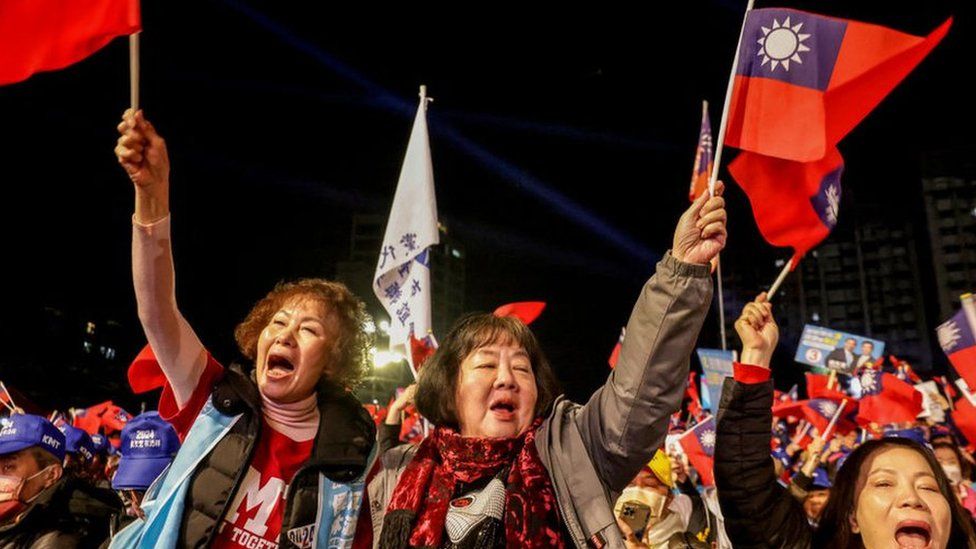
-
-
-
3 days ago
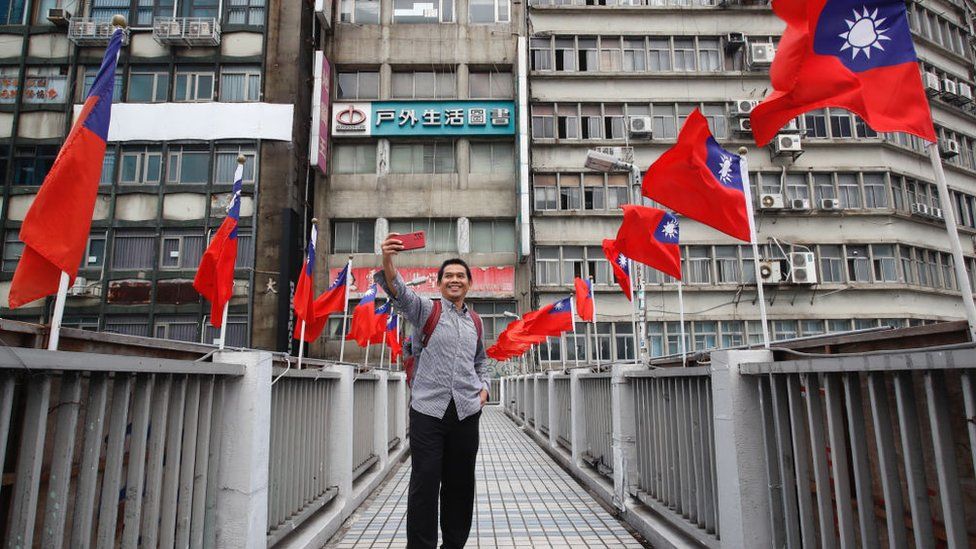
-
3 ex-Bhumjaithai MPs banned for life for proxy vote
PUBLISHED : 12 Jan 2024 at 05:52

Three former Bhumjaithai Party MPs have been slapped with life bans prohibiting them from contesting elections or holding political office again for proxy voting during the second and third readings of the 2020 budget bill.
The Supreme Court ruled that Chalong Thoetwiraphong, a former Phatthalung Constituency 2 MP, Phumsit Khongmi, a former Phatthalung Constituency 1 MP and Natee Ratchakitprakarn, a former list MP, deliberately breached ethics by allowing other lawmakers to use their electronic voting cards during the bill readings between Jan 10-11, 2020.
Mr Chalong and Mr Phumsit were suspended as MPs on Sept 3, 2021, when the court accepted the case forwarded by the National Anti-Corruption Commission (NACC). Ms Natee lost her MP status in a false asset declaration case before the lawsuit was filed.

Chalong: Breached ethical code
In its ruling, the court said the three politicians failed to take any action that would prevent others from using their cards, investigate to find those who did or report the proxy voting to the House Speaker.
They claimed they had other engagements, but this did not justify them leaving their cards with others, and their arguments could not disprove the allegations of proxy voting, the court said.
The life ban against the three followed a Supreme Court Criminal Division for Political Office-Holders ruling last May in which each of the trio was sentenced to nine months in prison over the charge. They were released on bail pending an appeal.
The proxy voting questioned the validity of the 2020 budget bill, and the Constitutional Court ordered a fresh vote on the budget proposal.

Phumsit: Suspended as MP in 2021

Natee: Lost MP status for hiding assets
Chadchart defends city zoning plan
Critics blast it as being ‘pro-developer’
PUBLISHED : 12 Jan 2024 at 05:33

Bangkok governor Chadchart Sittipunt on Thursday defended the fourth revision of City Hall’s plan for the city, which has attracted public criticism for being “pro-developer”.
Responding to the backlash, Mr Chadchart said City Hall is always open to constructive criticism but added that some opinions may cause social disunity.
The governor said via Facebook that, by law, the plan needs to be revised every five years to support the city’s growth.
Responding to criticism, he said the new plan aims to enhance people’s living standards.
Public hearings are under way before the plan is submitted to a Provincial City Plan Committee for further processing.
At one hearing on Saturday, Korn Chatikavanij, former finance minister and representative of a civil group, said the plan seemed to emphasise making the city more dense rather than improving the quality of people’s lives. Mr Korn also questioned the reason for expanding 148 roads around the city that City Hall claimed would support the railway system.
He believed the road expansion would benefit the construction of skyscrapers in residential areas, as the law prohibits high-rise buildings from being built on small roads.
He also commented against an FAR (floor-to-area ratio) bonus, saying that City Hall needed to include the measure as a prime condition for developers to lessen the chance of corruption.
Sophon Noorat, head of the Rights Protection and Protection Department of the Thai Consumer Council (TCC), said that the plan tended to support development and did not focus enough on people’s quality of life.
Kongsak Sahamontree from the Urban Life Quality Protection Community Network said the plan lacks public participation. He suggested that people’s opinions be heard and the plan revised accordingly.
Wisanu Subsompon, a deputy Bangkok governor, said on Tuesday that the plan was written based on the city’s expansion and changing area usage to increase green space for the public.
Colour coding used in the plan was for the public’s benefit, not for certain groups of developers, he added.
The public has at least 90 days to comment on the plan before approval, said Mr Wisanu.



